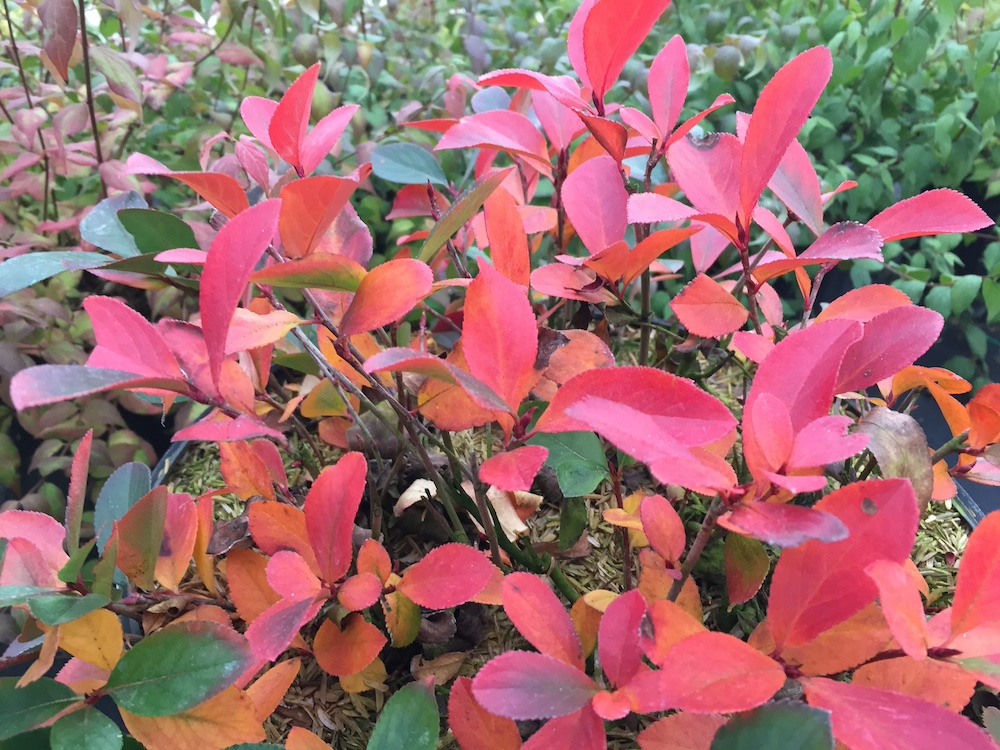
Our native chokeberries are underused shrubs, but they are one of the best for winter interest in the garden. Red chokeberry (Aronia arbutifolia) and black chokeberry (A. melancarpus) also feed wildlife.
Between the two, I like the red chokeberry because of how showy the fruit is in winter. The red fruit just pops. The plant is called chokeberry because the astringent fruit frequently elicits that breathtaking gasp that comes when we eat something tart.
Chokeberries have small white flowers in spring, green leaves in summer and in fall, stand back. They have to-die-for fall colors, along with showy fruit.
Chokeberry is suitable for sun to part shade and regular garden soil, although it does best in a moist location that runs in the acidic range. For a lot of us, growing chokeberry can be trial and error to find the best place for the plants. Not only do we want them to thrive, but we also want to be able to enjoy them when we look out the window.
Black chokeberry fruit has gained popularity over the last several years because of its antioxidant characteristics.
The shrubs sucker to form a colony and the straight species can get fairly large. However, there are several smaller varieties on the market that are suitable for smaller landscape.
Proven Winners has introduced two that should work well. Low Scape Mound is a black chokeberry in the 2 by 2-foot range. Adaptable in several soil types, this plant makes a good edger in the landscape. Ground Hug, another black chokeberry, is perfect as a 14-inch tall and 3 feet wide ground cover.
‘Autumn Magic’ is a large black chokeberry, which may reach 6 feet tall and 7 feet wide. About the only cultivar of red chokeberry is ‘Brilliantisima’, a beauty that can reach 6 to 8 feet tall and wide and is widely available.
Wondering what to do with the aronia fruit? Check out the Backyard Forager Ellen Zachos’ recipe for aronia pavlova.
Pictured above shows Low Scape Mound’si fall color. (Photo courtesy ProvenWinners.com)